
I came to Braunschweig to explore the city and see what the famous Braunschweig sausage, which we all know, is really like. Braunschweig is the second-largest city in the state of Lower Saxony, whose capital is Hanover. The city's symbol is the lion. I started my tour at the central square called Burgplatz, where there was a lion statue. In the 10th century Heinrich der Löwe ruled here. During his time the city began to flourish and the lion has been the city's symbol ever since. I could see the lion figure on the city's coat of arms, manhole covers, buildings and almost everywhere. Even when I arrived at the train station, a sign welcomed me with: Welcome to Braunschweig, City of Lions.

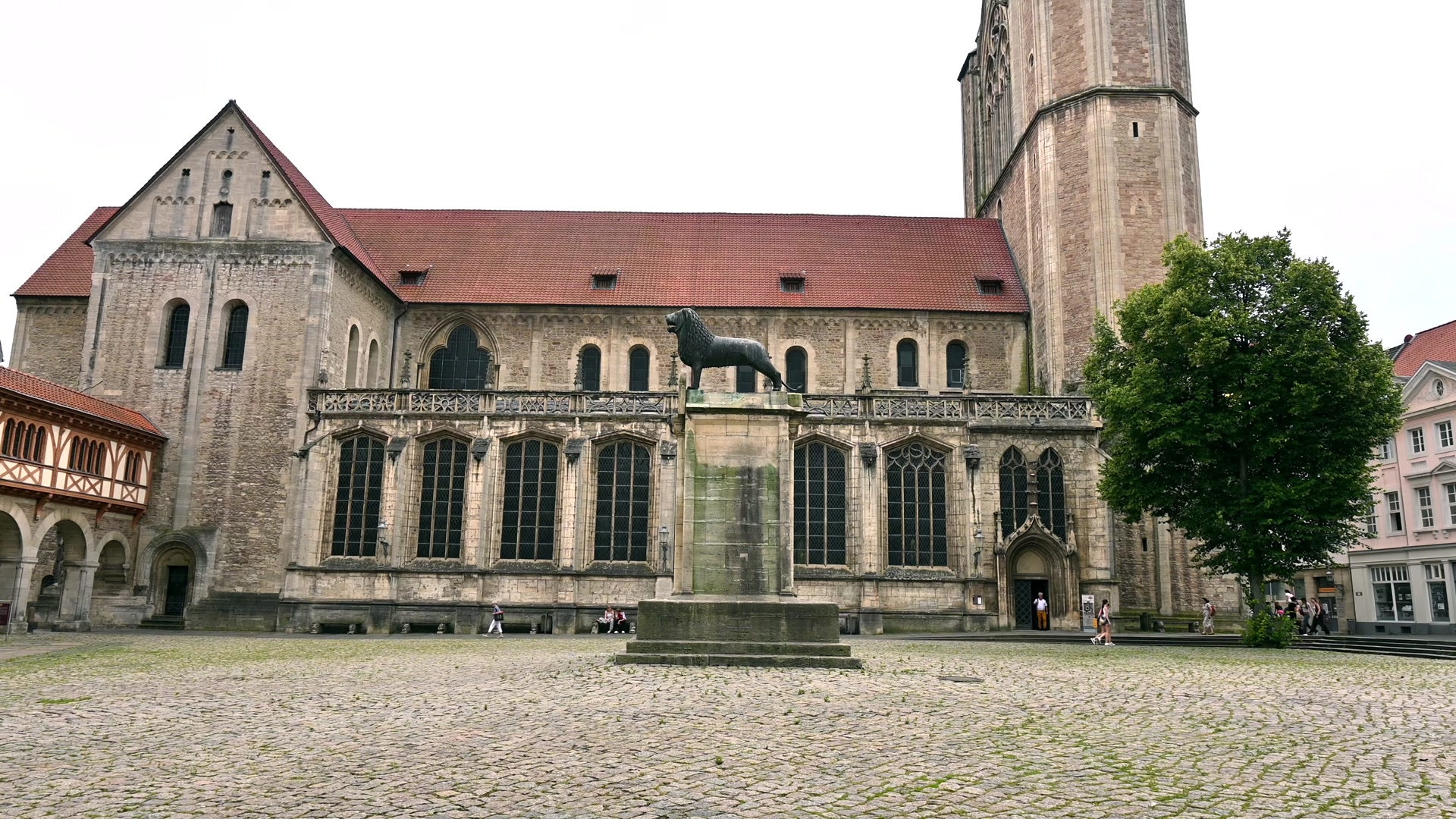
Braunschweig is also where the great mathematician Carl Friedrich Gauss was born, lived and passed away. There's a famous story about Gauss: When he was in school, his teacher gave the children the task of adding numbers from 1 to 100. He thought this question would take the children a long time. But Gauss immediately started adding the extreme numbers: 1+99, 2+98, 3+97... So each pair added up to 100. Fifty was left in the middle and by adding 100, he quickly found the total. He solved this problem in five minutes.

In Burgplatz square I visited Braunschweig Cathedral. Inside there was something quite interesting: a menorah in the center. Next to it were the tombs of Heinrich der Löwe and his wife. The lion figure is also on the cathedral door and even on the benches. Looking at the benches, you can see lion carvings on them.








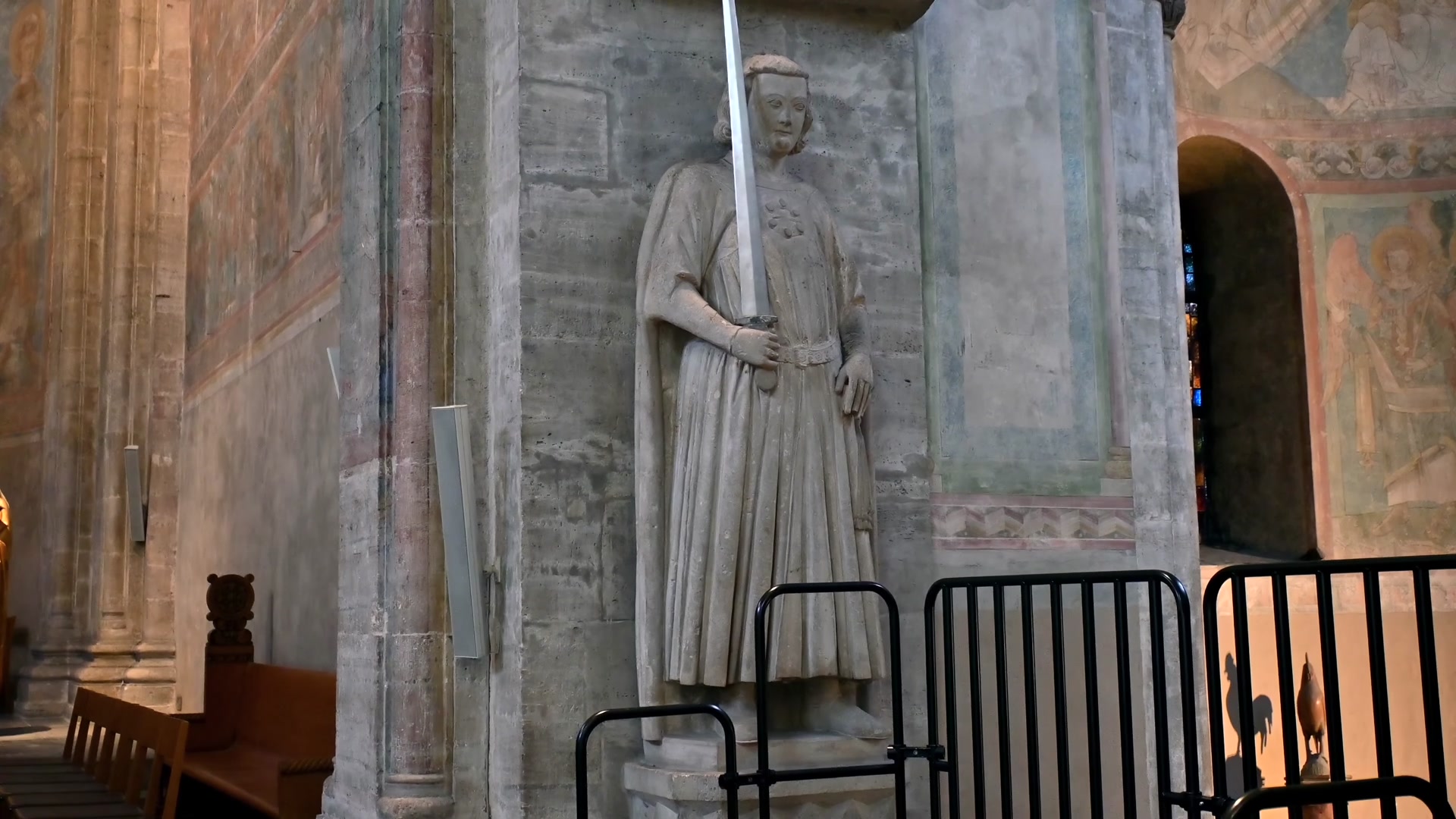






On the back of the cathedral there's a large clock. Its color palette reminded me of the clocks in Prague. Then I went into a small souvenir shop. There were lion figures everywhere again, but no pictures of sausages. Lion, lion and again, lion. I stopped by the tourist information office and bought a refrigerator magnet. But even there, there was no trace of the Braunschweig sausage.








The main tourist attractions in Braunschweig are very close to each other. Right next to Burgplatz square is the New Town Hall and in front of it, a beautiful sculpture-column. This column was built in honor of 2000 years of Christianity. It has a cross, a Star of David and a crescent on top.
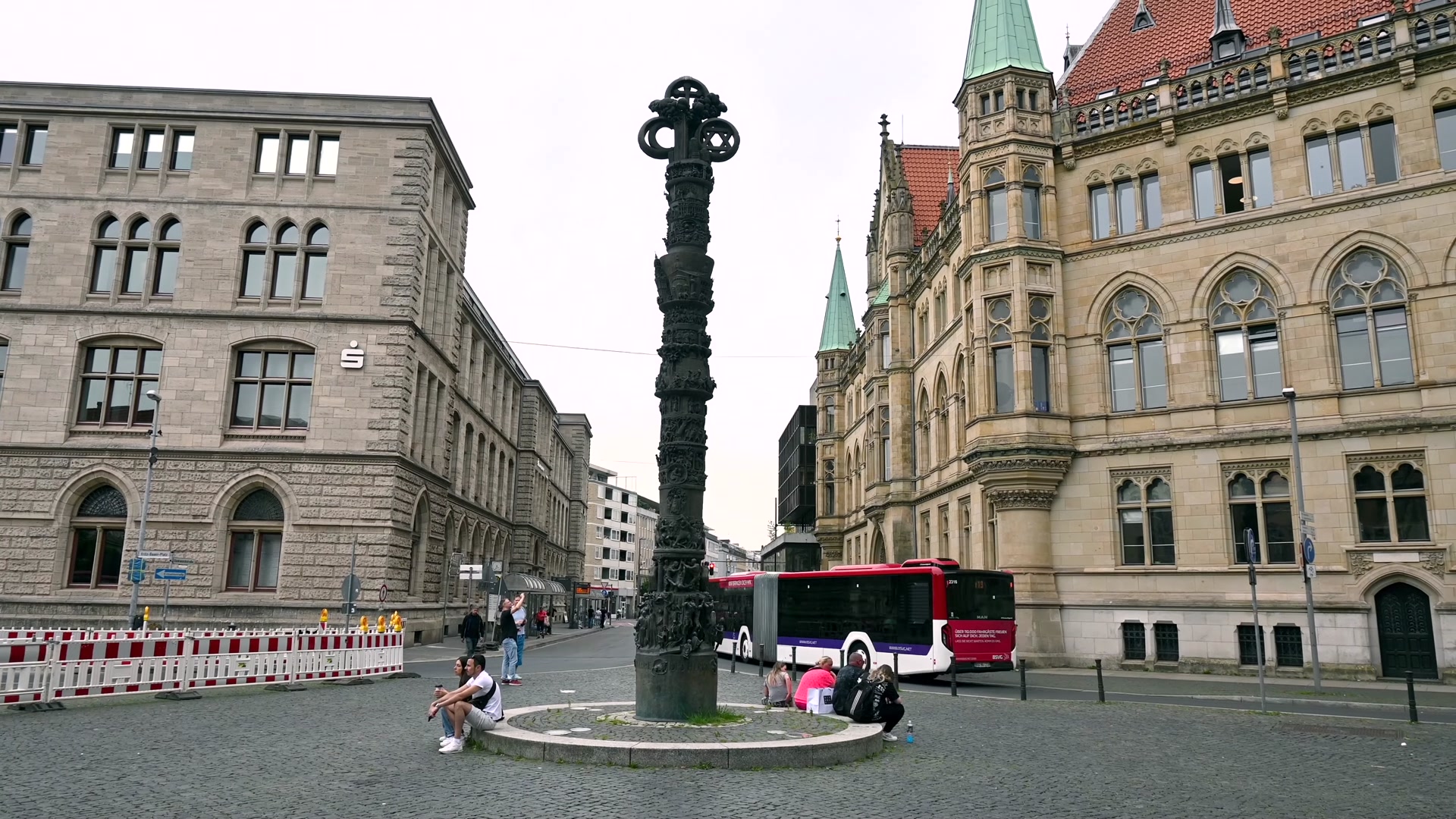


I haven't seen so many lion figures in any other city. They are everywhere. The New Town Hall is quite impressive. Across from it is a piece of the Berlin Wall.
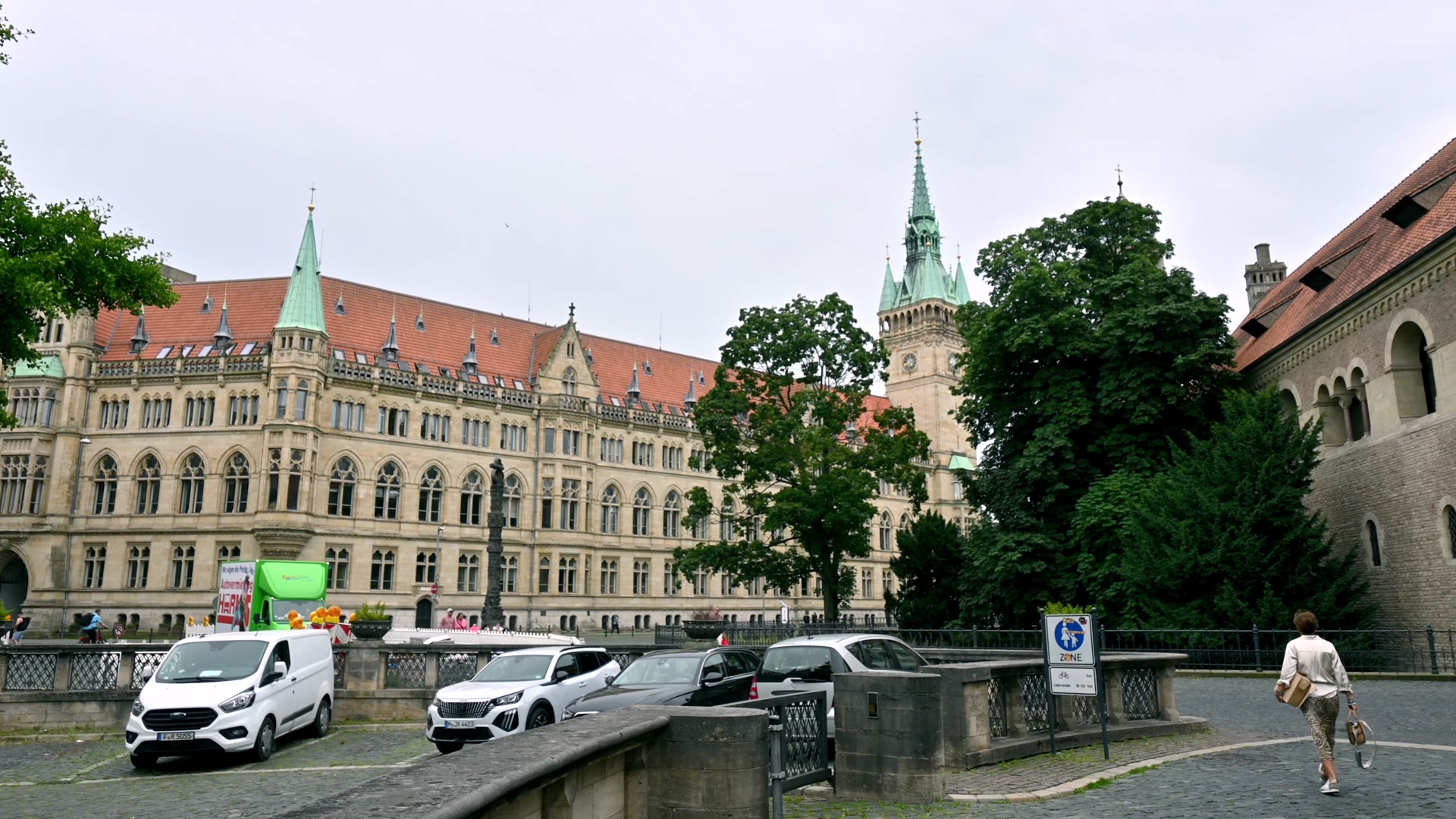
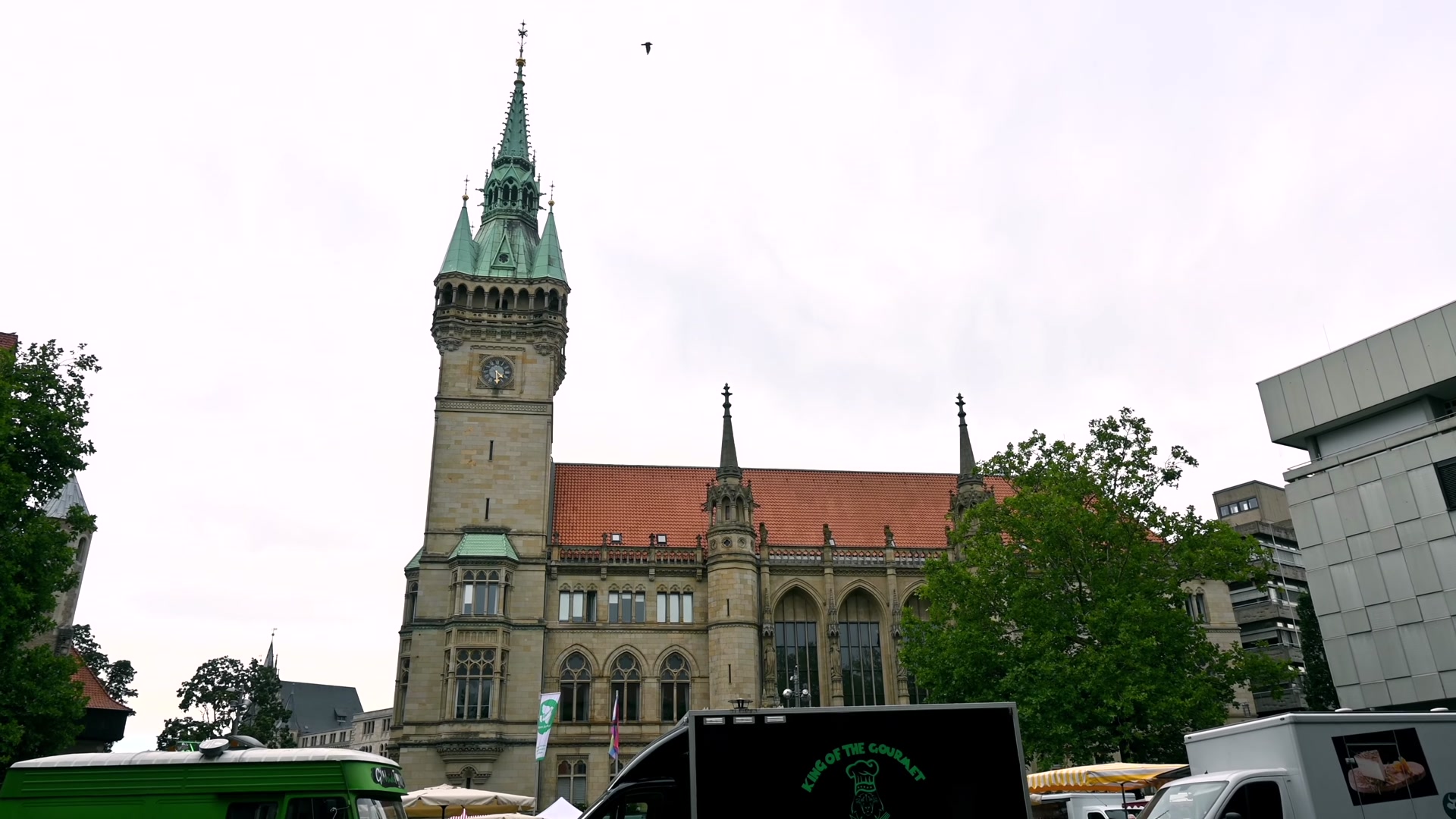
Just 100 meters from the New Town Hall is the former palace of the Duchy of Braunschweig. Today it's a shopping mall. I found a supermarket, a common chain throughout Germany. There were sausages, but no Braunschweig sausage. The ones branded William Brandenburg were produced in Frankfurt. All the shelves had products from different cities, but nothing from Braunschweig. At one stand, there were mettwurst sausages, with Göttingen written on the label. I was confused.




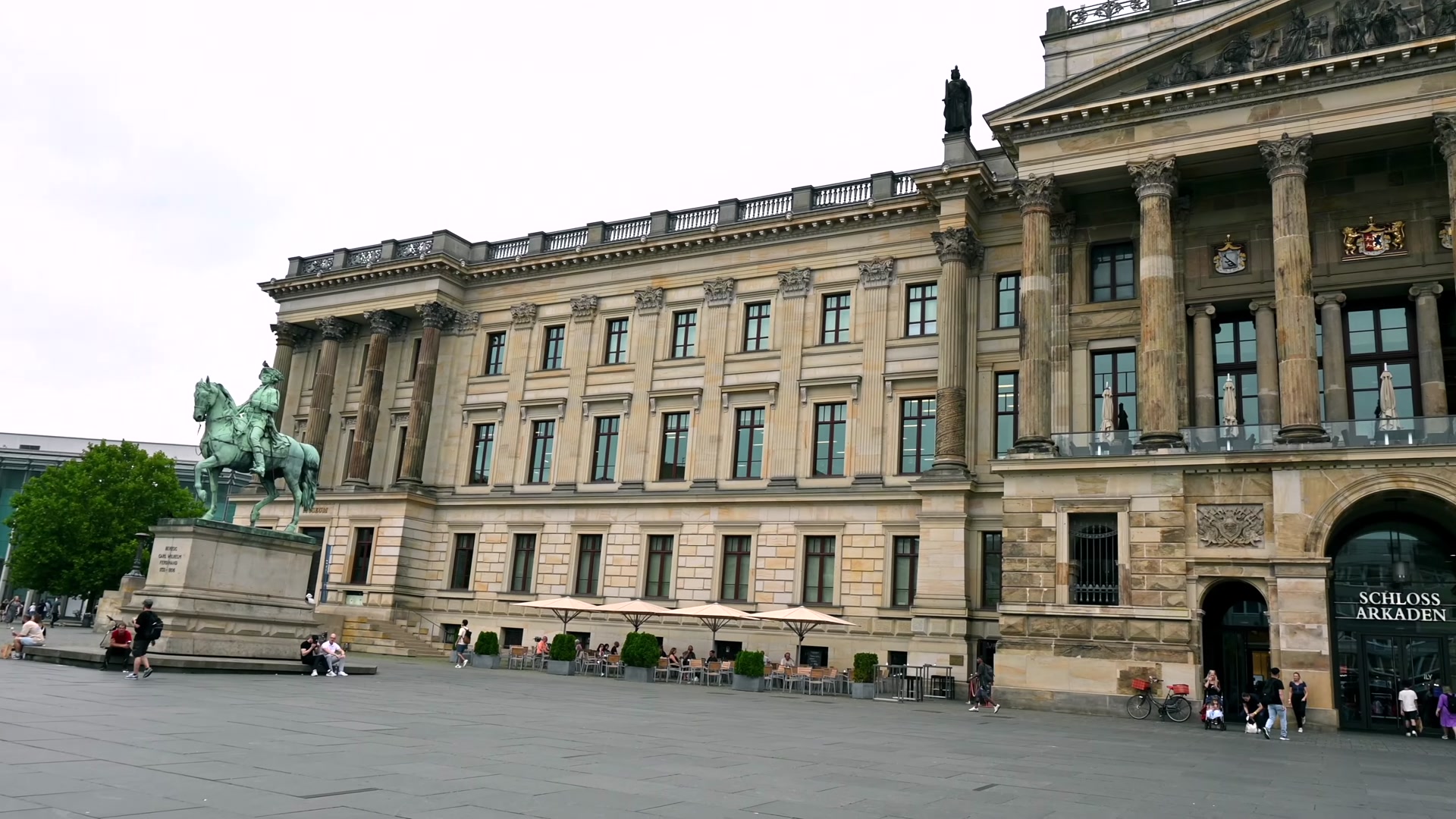


In conclusion the Braunschweig sausage might be a myth. It's said to be sold in every supermarket, but it wasn't here. I could only find local beer, which is also produced in Braunschweig. But local beers are already available in supermarkets in other cities too.

To be fair the palace building doesn't just house a shopping mall. There's also a museum. At least there's a trace that dukes once lived here.

Next to the ducal palace is an interesting building called Happy Rizzi House. It really looks like a cartoon house. It's currently used as offices, but imagine if the whole city consisted of buildings like this? What would it be like to live inside?


This colorful building also has many three-dimensional figures attached to its facade. Honestly just seeing this house alone is worth a trip to Braunschweig.
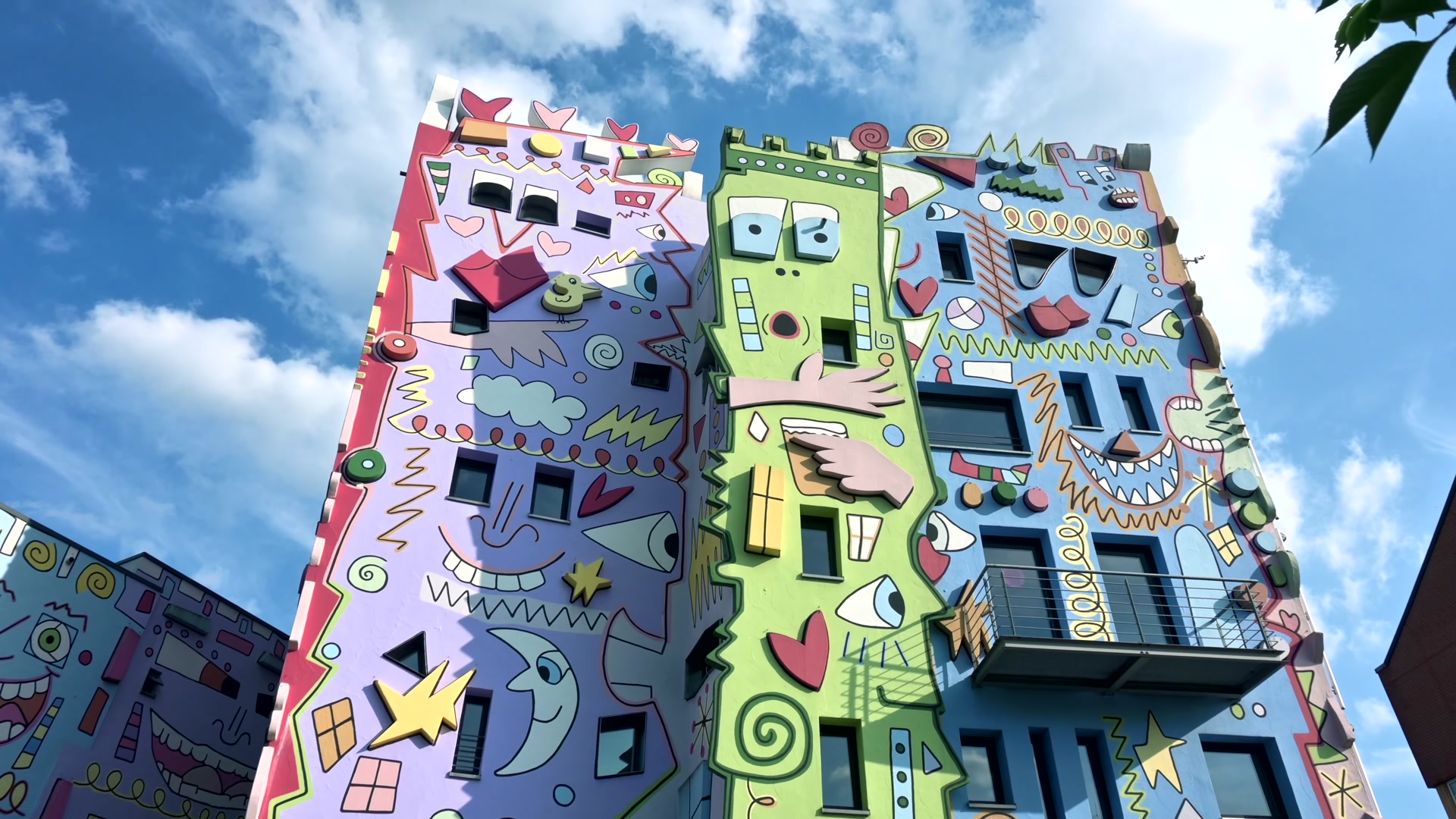



Next to it are traditional German half-timbered houses or fachwerks. So, old and new architecture are intertwined. In the city center there are many such old houses and narrow, cobblestone streets. It's as if time has stood still, everything seems to be from the Middle Ages.

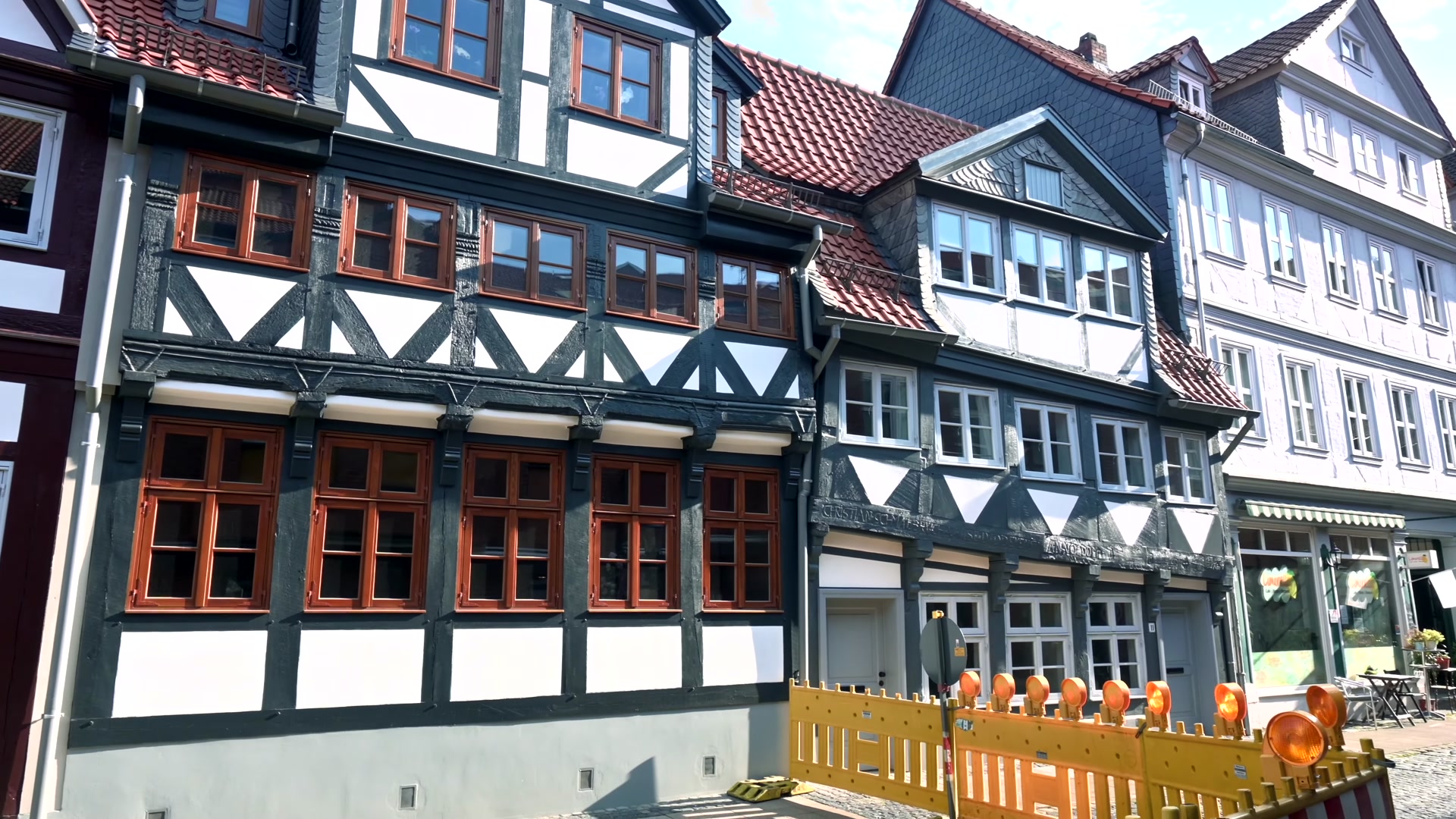
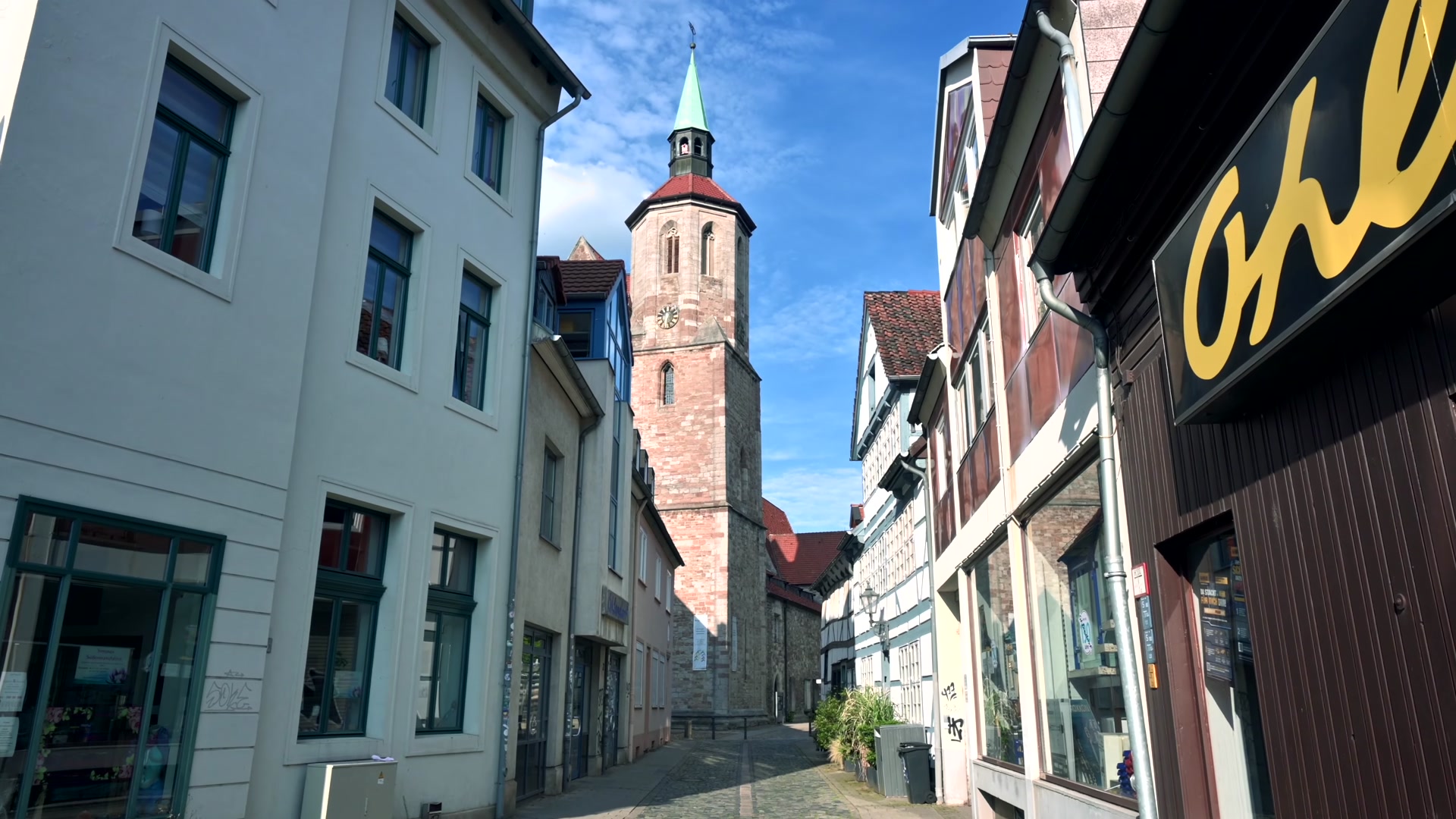
459.jpg (https://images.hive.blog/DQmUGiM4K5RMA57SyingYBPVBuhjHQbQ5rKekYESMry17h3/459.jpg)
462.jpg (https://images.hive.blog/DQmTy1kMuFsLoBmj6TE2zahzZGFfPQzFDpnAfdLLzGqtJJb/462.jpg)
For those living on these streets, there are also small courtyards and basketball hoops, among other details. Modern life continues within the historical atmosphere.
491.jpg (https://images.hive.blog/DQmd57fWdVv52Z9hQKSzSTDTd6vpipNnYJcancU5BUtLcQX/491.jpg)
Where I was there was a church surrounded by leaning half-timbered houses. A rare sight. A stone was hung on the church wall and below it, a humorous weather forecast board: If you can't see the stone, it's foggy. If the stone casts a shadow, it's sunny. If the stone is wet, it's raining. If the stone is white, it's snowing... You can find such boards in other cities too.
044.jpg (https://images.hive.blog/DQmdxijJwTgTUc2yZ4SUvDtfdeSLxm781kBPiQRxbdmxEHs/044.jpg)
002.jpg (https://images.hive.blog/DQmNg1TzcMpK5Xv4CXuqsNzAdFWaHAzkAVujsXuEpGF4xYJ/002.jpg)
016.jpg (https://images.hive.blog/DQmUzh9L1kUpFzVggUqsUrRZVEo9Dz7xDGsmvjkqew542ya/016.jpg)
018.jpg (https://images.hive.blog/DQmd1uPbX7sdFGTFM6GitDPuTeQVYgKw8XTj9YdSfGRFfzp/018.jpg)
There are also narrow streets here that resemble the Schnoor Quarter in Bremen. Braunschweig and Goslar are also quite similar. The color tones and architectural textures are the same.
094.jpg (https://images.hive.blog/DQmWWEznzBBFC8Zu4ZT84nRYmiRUSvq5Hpa2ps6orKqXNCP/094.jpg)
122.jpg (https://images.hive.blog/DQmS57F775GEKsWvXKneKkPBL3LMwjpPf4Q24Vaz2oHE8Bo/122.jpg)
129.jpg (https://images.hive.blog/DQmec3bMChzUJ4Ai3KAMSGvRoHX1kMzCn14JZmTY4x9S6iW/129.jpg)
While Hanover is more secular Braunschweig has many churches, all with similar architecture. For example, in these narrow streets, there are passages between the houses. It's unclear which building these passages belong to and you're not even sure if they're independent structures. Even these passages have lion figures.
175.jpg (https://images.hive.blog/DQmd5i5HMVmNXKsL5GgU44gZ42XrCpU6GJ7D2Dd8bQWoKH4/175.jpg)
179.jpg (https://images.hive.blog/DQmcjD8JMrKwPSMMXHqaHbkHtcw5BWBfpVTJKbqURGTWZj2/179.jpg)
184.jpg (https://images.hive.blog/DQmVRXWqgM5FxyJinvtwaxwKqwT5SfDQG7JyxY48dq2NerL/184.jpg)
205.jpg (https://images.hive.blog/DQmekpiyKzXVhALLzomiJwiz7g5XaY4bgQ6GfpYA5qeiPRi/205.jpg)
254.jpg (https://images.hive.blog/DQmU6RiXqPkpuzjiArQ3A53otkqWYjViC6zNsPmpobdet55/254.jpg)
260.jpg (https://images.hive.blog/DQmUjgoSBQ7vwLgWtTGmejKL5ELvk5oq48R14KJbJyeAtzT/260.jpg)
Braunschweig's shopping street is like a classic city: shops on both sides, a pedestrian walkway in the middle. This street leads to Altmarkt Square, the old market square. There's also a fountain with a lion figure in this square.
288.jpg (https://images.hive.blog/DQmNZBUqGNFQzPkZdUgb98A6dcTTtPkGHwEfkZQWDksTyKD/288.jpg)
319.jpg (https://images.hive.blog/DQmfHNPoWooC3Nvm8onr1XXxoPKiZkyxY1nUHuH2TqP3DQb/319.jpg)
321.jpg (https://images.hive.blog/DQmWMGEermeo6eZFUzNAPT4bpFnQ9hB7SGBjELqvi3WTyrq/321.jpg)
331.jpg (https://images.hive.blog/DQmWUQqvoUEgh4qmHCqmtVcs6S9AN8jzykv8aC4ZNB8zWTz/331.jpg)
Nearby is the old town hall, reminiscent of the building in Bremen. Right next to it is St. Martin's Cathedral. All the cathedrals in the city are very similar to each other.
450.jpg (https://images.hive.blog/DQmVhWWNTuCbQouzGBxWAk7nR36SwjLYC8PnDwPzPNuvS4T/450.jpg)
I saw a building from 1479. How old!
047.jpg (https://images.hive.blog/DQmYYdZDyEStp8one7xEeikjFQUfGrq95M8fkpxpkvwsLY4/047.jpg)
The Braunschweig sausage might be entirely a myth. There are different versions in different countries. One in Austria, completely different ones elsewhere. But I couldn't find any information about why it's given this name or why it's associated with Braunschweig. In Germany, for example, Nuremberg sausages or Thuringian sausages are famous and sold everywhere. But there's no information about sausages specific to Braunschweig and I didn't encounter any here.
344.jpg (https://images.hive.blog/DQmPs3QAMpWMpd7g188qw4RzkdwpQP3JogCqtMMZ8HvDxet/344.jpg)
361.jpg (https://images.hive.blog/DQmfEiUNUPXfyF6EQEr48BMkC36X73StWbCnsVJwR2cEQqX/361.jpg)
366.jpg (https://images.hive.blog/DQmU98Vmp3jM78eRuhMjVqFNqeuPqC2BSzksMY6otsHmwk8/366.jpg)
395.jpg (https://images.hive.blog/DQmaqvYwjLVtEuGmyPRBDSL6UzXjVRwywAPhrffVjDrkmqm/395.jpg)
424.jpg (https://images.hive.blog/DQmTUryUz9zkbKN7uNT57jiaFaoMhjLVJaxwQogPvJUkChT/424.jpg)
439.jpg (https://images.hive.blog/DQmaT2FKrk5LxC5H1Q758m1X9J3UYL78otEgZ27vCpRsDUr/439.jpg)
478.jpg (https://images.hive.blog/DQmdisgwmvAyVvezdKmDdS4hqgm3d2a5dDXa1Kd3h8Q7cMw/478.jpg)